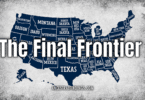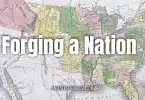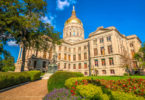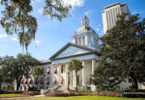Every state in the United States has a name, but where do those names come from? Some honor royalty, while others pay tribute to places overseas. Many originate from Native American languages, reflecting the land’s deep indigenous history. Understanding the origins of state names offers a glimpse into the past—into the explorers, settlers, and indigenous peoples who shaped early America.
This series explores the stories behind the names of all fifty states, starting with the original thirteen colonies. These were the first British settlements in North America that eventually became the foundation of the United States. Their names carry echoes of the Old World, the influence of European monarchs, and the presence of the Native American tribes who lived on the land long before colonization.
Delaware (1638, Colony; 1787, Statehood)
Delaware takes its name from the Delaware River and Bay, both for Sir Thomas West, 3rd Baron De La Warr. As the governor of Virginia, Lord De La Warr played a significant role in the early colonial administration, though he never set foot in what would become Delaware. The state was originally part of Pennsylvania before becoming its colony in 1704.
Pennsylvania (1681, Colony; 1787, Statehood)
Pennsylvania, meaning “Penn’s Woods,” was named by William Penn after his father, Admiral Sir William Penn. King Charles II granted the younger Penn the land as repayment for a debt owed to his father. A Quaker, Penn envisioned Pennsylvania as a place of religious freedom, and its name reflects both personal honor and the promise of a new beginning.
New Jersey (1664, Colony; 1787, Statehood)
New Jersey was named after the Isle of Jersey in the English Channel. Sir George Carteret, one of the colony’s proprietors, had been governor of Jersey and was honored by having this new land named after his home. Before the English took control, the colony became a refuge for diverse groups, including Dutch and Swedish settlers.
Georgia (1732, Colony; 1788, Statehood)
Named in honor of King George II of England, Georgia was the last of the thirteen colonies to be established. It was founded in 1732 as a buffer between Spanish-controlled Florida and the more prosperous British colonies to the north. Georgia also served as a place for debtors and the poor to start fresh under a system of land grants.
Connecticut (1636, Colony; 1788, Statehood)
Connecticut comes from the Algonquian word quinetucket, meaning “long tidal river,” referring to the Connecticut River, which played a crucial role in the colony’s development. The name preserves the region’s Indigenous history, even as European settlers reshaped the land and society.
Massachusetts (1620, Plymouth; 1630, Massachusetts Bay Colony; 1788, Statehood)
Massachusetts is named after the Massachusett tribe, whose name means “at the great hill,” likely referring to the Blue Hills near modern-day Boston. The colony became a center of Puritan life in the New World and played a pivotal role in American history, from the Pilgrims’ landing to the sparks of revolution in the 1770s.
Maryland (1632, Colony; 1788, Statehood)
Maryland was named in honor of Queen Henrietta Maria, the wife of King Charles I. The colony was founded as a haven for English Catholics, who faced persecution in Protestant England. Maryland was among the first colonies to introduce laws protecting religious tolerance, though these laws fluctuated depending on who held power.
South Carolina (1663, Province; 1712, Separate Colony; 1788, Statehood) and North Carolina (1663, Province; 1712, Separate Colony; 1789, Statehood)
Both Carolinas were named after King Charles I of England, as “Carolus” is the Latin form of Charles. Originally one large colony, the Carolinas split in 1712 due to political and economic differences. South Carolina became known for its plantations and cash crops, while North Carolina was more rural and scattered with smaller farms.
New Hampshire (1623, Colony; 1788, Statehood)
New Hampshire was named after the English county of Hampshire. Captain John Mason, who had received a land grant to establish a colony, chose the name. Though Mason never visited New Hampshire, his chosen name remained. The state would later be the first to establish its constitution, leading the charge toward American independence.
Virginia (1607, Colony; 1788, Statehood)
Virginia was named in honor of Queen Elizabeth I, known as the “Virgin Queen” because she never married. The colony, established in 1607, was England’s first permanent settlement in North America. Jamestown, its first settlement, struggled through disease and famine but ultimately thrived due to the introduction of tobacco as a cash crop.
New York (1624, Dutch Settlement; 1664, English Colony; 1788, Statehood)
Initially settled by the Dutch and called New Amsterdam, the British later took the colony and renamed New York in honor of the Duke of York, who would later become King James II. The city and colony quickly grew into a significant commercial hub, with trade playing a central role in its development.
Rhode Island (1636, Colony; 1790, Statehood)
The origin of Rhode Island’s name is debated. Some believe it was named by the Italian explorer Giovanni da Verrazzano, who likened the land to the Greek island of Rhodes. Others credit the Dutch, who referred to the area as “Roodt Eylandt,” meaning “red island,” likely due to its red clay shores. Rhode Island was unique among the colonies for its early commitment to religious freedom, established by its founder Roger Williams.
The names of the original thirteen colonies reflect the complex history of early America. Some honor European monarchs, others preserve indigenous words, and many serve as reminders of the aspirations of the settlers who founded them. These names are more than just labels on a map—they tell the stories of exploration, conquest, resilience, and cultural blending that defined the birth of a nation.
As this series continues, I’ll explore the meanings behind the names of the rest of the United States, uncovering the history behind each one. Stay tuned for the next part, where we move beyond the original colonies and into the next phase of America’s expansion.






